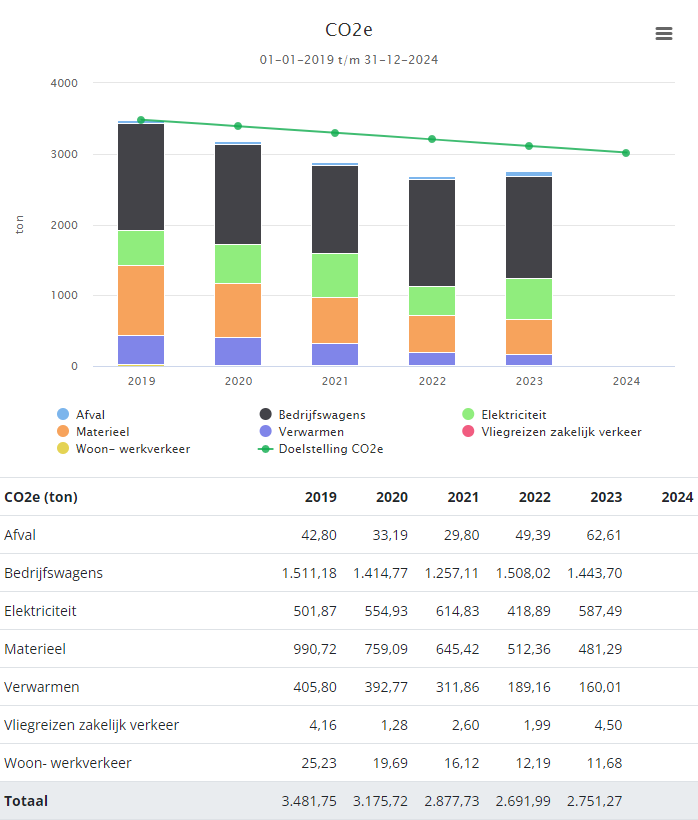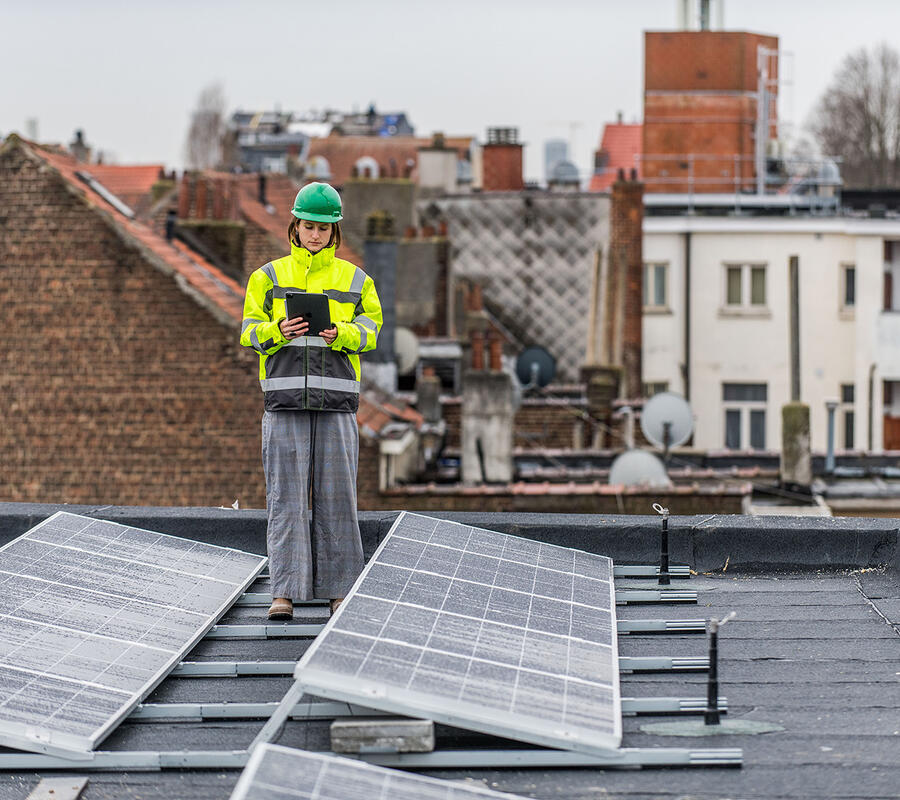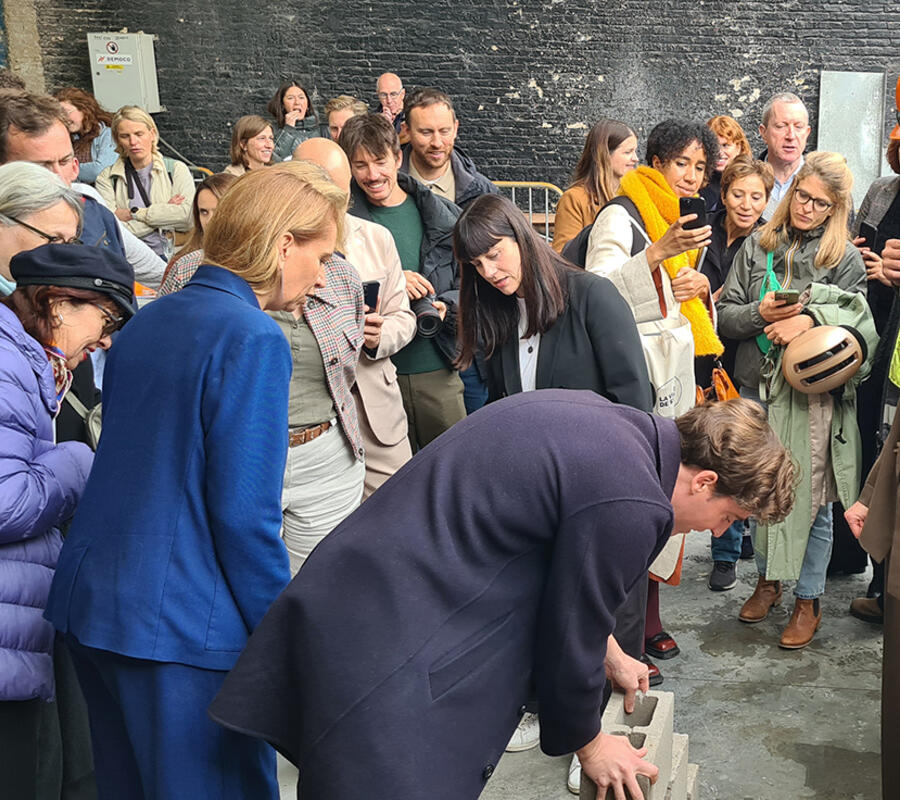In our ongoing efforts to reduce CO2 emissions, we are pleased to share our analysis and trends observed in various aspects of our operations. Our initial goal was an absolute CO2 emission of 2,615 tons by 2025, representing a 24% decrease compared to 2019. Currently, we are at 2,751 tons, with two years remaining to reduce it by 136 tons.
2022 vs. 2023: an increase of 60 Tons
The most significant shift in our figures from 2022 to 2023 is an increase of 60 tons in total CO2 emissions. Let's delve into this increase:

Company vehicles: we observe a significant decrease of 60 tons in the CO2 consumption of our company vehicles. With the anticipated further decline in 2024 and 2025, along with the order of 8 electric cars in 2023, we anticipate an additional reduction of 150 tons by 2025.
Equipment, diesel consumption on sites, and warehouse: a reduction of 30 tons, possibly due to the increasing electrification of the construction sites. This trend is not expected to continue.
Electricity: an increase of 170 tons, exclusively on construction sites, explained by the electrification of the sites. We expect this trend to continue to rise with the ongoing electrification of sites and the fleet.
Heating: a reduction of 30 tons attributed to decreased use of gas installations upon project completion.
Conclusion: the increase of 60 tons of CO2 is mainly attributed to electricity consumption on construction sites. This highlights the need to be frugal with electricity on construction sites as one of the main ambitions to continue reducing our emissions. Additionally, the electrification of our fleet will contribute to a promising reduction in the coming years.
Conclusions and measures for the future
Emission distribution: currently, 53% of our emissions are attributed to vehicles, but this trend will decrease due to electrification, with an expected decrease of 200 tons by 2025 (8%). Equipment remains stable (18%), electricity offers further room for reduction (22%), and heating is likely to decrease.
Future measures: with current measures
We expect a further reduction of ±240 tons by 2025, totaling 2,500 tons. We are considering possible adjustments for equipment and electricity.
Status of measures list 2022 including adjustments
a. Electrification of construction sites: with 88% of sites connected to electricity in 2022 and no adjustments needed, we continue our efforts.
b. Installation of timers: although the installation did not proceed smoothly in 2023, we are exploring the possibilities of automated control via timers for energy savings.
c. Monitoring of energy consumption on construction sites: adjustment is needed for better monitoring and integration into budget control.
d. Green energy generation on construction sites & offices: temporary halt on PV installation, further approach is under consideration.
e. Electrification of the fleet + mobility budget: with 43% electric vehicles by 2025, we are revising our original KPI of 70%.
f. Revision of telecommuting policy: no adjustment, policy remains the same.
g. Energy-efficient construction site cabins: revised to energy-efficient cabins since 2020 with positive results.
h. LED Lights on construction sites: no adjustment, all new lights are LED.
i. Electrification of machinery: no decision made; proposal for more internal training on sustainability.
This analysis and progress report demonstrate our commitment to a more sustainable future. We continue to focus on tangible actions to further reduce our CO2 emissions.



